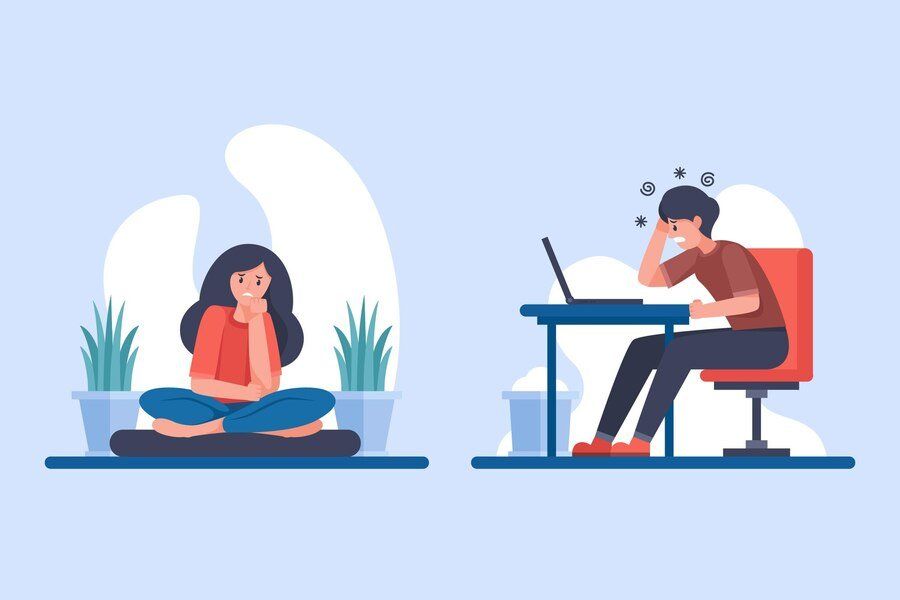Six Steps to Avoiding Burnout

2022 is well underway, and for many of us, it feels like we are starting the year with an emotional hangover. Two years of COVID induced uncertainty and lockdowns has left us feeling tired and drained. Even the summer holidays didn’t leave us feeling recharged.
While it’s not yet time to write 2022 off, there are still many opportunities ahead. It is, however, an excellent time to check your foundations to ensure you are ready to make the most of what 2022 offers you.
You don’t have to look too far to see the statistics or hear stories that illustrate the strain the last two years have thrown our way.
And yet, the rise of burnout at work didn’t start with the pandemic. It’s been climbing for years. For example, a 2018 Gallup study found that of the 7,500 full-time employees surveyed, 23% felt burned out at work very often or permanently, and an additional 44% felt burned out sometimes.
The rise of burnout resulted in the World Health Organisation officially classifying ‘burnout’ as a recognised illness in May 2019.
This May Interest You: 10 Ways To Encourage Healthy Lifestyle Practices In Office
Therefore, knowing the warning signs and putting in place practices to prevent it from taking hold is critical – not just for you but so you can be ready to support your team members and colleagues.

Infographic by Leaderonomics: 6 Steps to Avoid Burnout
Step one – Start noticing
Firstly, be alert to the warning signs of burnout. The symptoms can include: feeling ineffective and more negative, having reduced energy, motivation, and efficiency, and being more frustrated and irritable. You may feel as though you are working hard and accomplishing less.
At this point, you may also find yourself drinking too much, eating poorly, and relying on substances and other unhealthy mechanisms to get you through your day. These practices will only exacerbate the problem.
Once you’ve noticed, the next steps are to recognise the emotional load and take action.
Step Two – Recognise the emotional load
The last couple of years have been challenging on many fronts. It’s essential to recognise the emotional load that you may be carrying. Acknowledging and accepting how you feel is a crucial part of this.
You will also want to manage your energy and give yourself time more time than usual to rest, reflect and recharge. Be ok with the fact that you may need more ‘me time’ than you have previously. Actively and deliberately build this time into your day.
One way to do this is to shift your environment. For example, allocate time where you get outside and away from your desk. When you do this, you alter your state, which helps reset your mindset and enables you to get a fresh perspective. You are likely to find that the problem you were trying to solve is now easier to resolve.
Step Three – Take deliberate action
Get deliberate about the choices you are making about your day. Are you making healthy and wise choices, or are you making the easy choice? Consider the steps you can take to find more control in your day.
For example, everyone likes to see they are making progress; we find it motivating. In contrast, a lack of progress and constant setbacks is demotivating. Consequently, find ways to break your work into smaller, more bite-sized pieces of work, so it is easier to see more regular progress.
Read More: How to Turn Stress Into Success Once You Reach the Top
Step Four – Say no more often
Be upfront with your boss about your workload and what’s manageable. It can be effortless to say ‘yes’ when a request comes in, yet there will be times when you need to say ‘no’.
It helps to set realistic boundaries about what you will and won’t do and how you will respond to requests for work outside standard working hours. If you don’t set limits that you are ok with, you’ll ultimately resent the other person (and be annoyed with yourself).
Step Five – Build healthy habits
Build regular routines that are healthy and support your emotional and physical state. These habits can include:
- Moving more – exercise and moving helps to shift your state, releasing the brain’s happy chemicals
- Getting enough sleep, eating well and meditating – all of which impacts your mood and ability to cope with what’s going on around you
- Finding a furry friend – patting a dog, watching a dog run around the park, or any other activity that involves animals is a proven method for destressing
- Breathing deeply – remember to slow down and breathe. When you are stressed and anxious, you typically take shorter and sharper breaths
- Connect with nature – we all come from nature, and so it’s no surprise that spending time in nature and the great outdoors makes us happier and healthier
- Being grateful for what is – when you reflect on what you have, it is easier to realise that the bad day is usually temporary, and you have so much to be thankful for
Dive Deep: Are You Worried You’re Burnt Out?
Step Six – Stay connected
Tom Rath, in his book “Vital Friends: The People you can’t afford to live without“, outlines research that shows that employees who have best friends at work are seven times more likely to be engaged in their jobs. Additionally, if they have at least three vital friends at work, they are 96% more likely to be satisfied with their lives.
Connection is at the root of all human existence. When you have relationships at work, you have trusted friends to talk through your challenges and get advice. When you have strong connections with friends and family, you have people to share with. Opening up and sharing how you feel and being open about experiences is healthy and good for the soul.
In today’s busy, busy world, taking care of yourself isn’t a luxury; it’s essential. Having that in place gives you the bandwidth to better respond to what’s happening around you. As Author Charles Swindoll once said, “Life is 10% what happens to me and 90% of how I react to it”.
Avoid the downfalls of burnout within your company and stay in tune to your employees well-being with technology like Happily (or Budaya for those from Indonesia). It has amazing analytics and also provides activities for employees to be fully immersed in the organisation's culture. Watch now!
To find out more about Happily, click here or email info@leaderonomics.com
Functional
Tags: Personal Growth, Mindfulness, Understanding Emotions, Mental Health
Michelle Gibbings is a workplace expert and the award-winning author of three books. Her latest book is 'Bad Boss: What to do if you work for one, manage one or are one'. www.michellegibbings.com.






